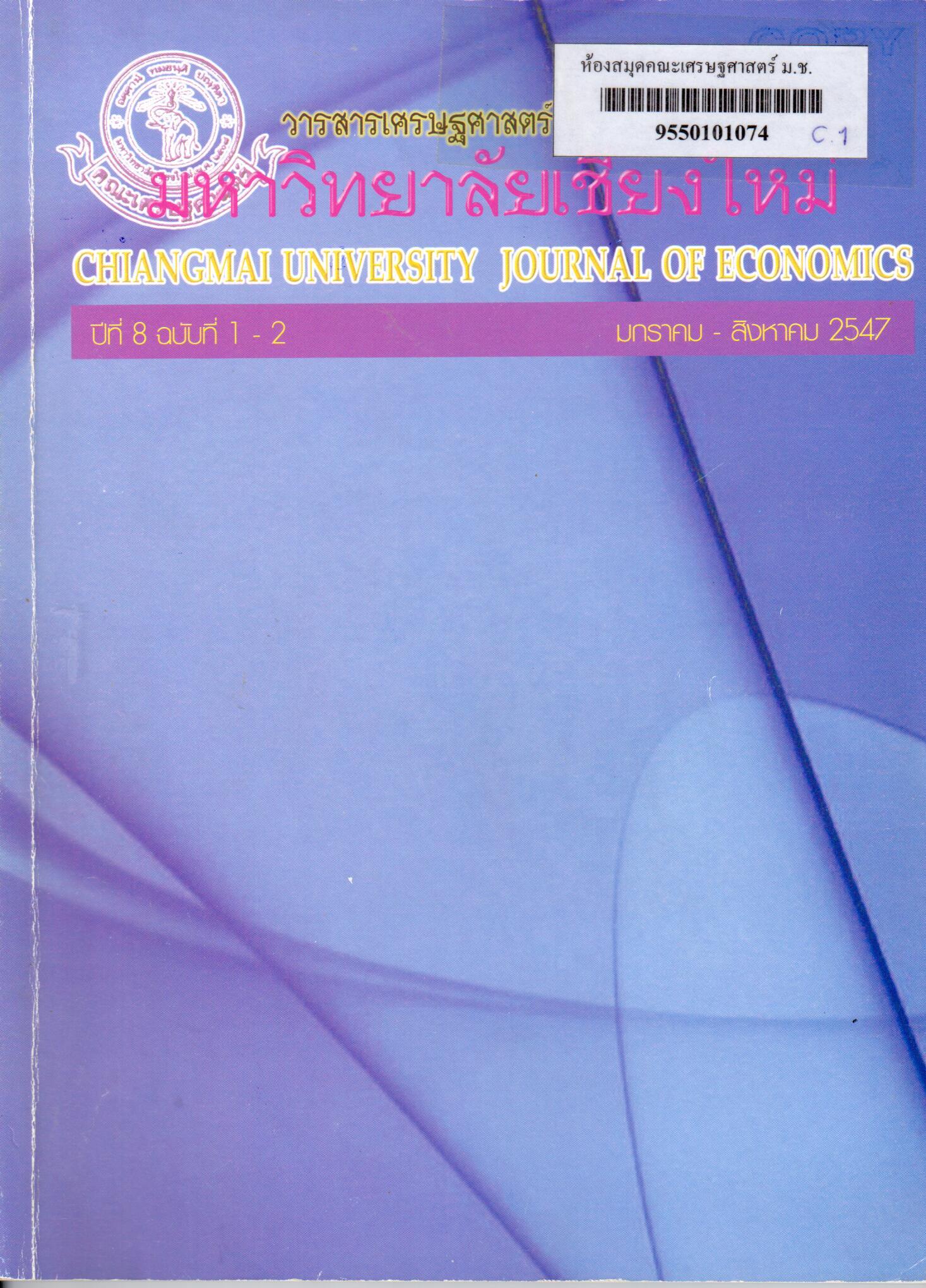ทิศทางการพัฒนาหัตถกรรมพื้นบ้านในภาคเหนือตอนบน
Abstract
บทคัดย่อ
งานหัตถกรรมเป็นแหล่งรายได้เสริมครัวเรือนเกษตร และเป็นแหล่งสร้างงานที่สำคัญในชุมชน การพัฒนางานหัตถกรรมจึงจำเป็นต้องได้รับการวางยุทธศาสตร์ด้วยฐานความรู้ความเข้าใจทั้งระดับจุลภาคและระดับมหภาค ประกอบด้วยการสังเคราะห์และวิเคราะห์ด้านการผลิตและประกอบการจาก 40 กรณีศึกษา และการวิจัยด้านการตลาดผู้บริโภค 723 คน การศึกษาครอบคลุม 5 ประเภทผลิตภัณฑ์ในภาคเหนือตอนบน ได้แก่ ผ้าทอ จักสาน กระดาษสา เครื่องปั้นดินเผา และไม้แกะสลัก
จากการวิเคราะห์และสังเคราะห์หน่วยประกอบการและผู้บริโภค สรุปได้ว่าจุดแข็งและโอกาสที่สำคัญที่สุดของภาคหัตถกรรม คือ การมีภูมิปัญญาท้องถิ่นที่หลากหลายเป็นทุนเดิมและนโยบายสนับสนุนด้านการตลาดและการเงินอย่างมากเป็นประวัติการณ์ ส่วนจุดอ่อนและอุปสรรคหลัก คือ การขาดช่างฝีมือระดับสูง ทำให้ผลิตภัณฑ์มีมูลค่าลดลง มีการลอกเลียนแบบโดยไม่รักษาเอกลักษณ์ประจำถิ่นและขากความสามารถในการบริหารกลุ่มและการจัดการเชิงธุรกิจซึ่งมีลักษณะพลวัตสูง ตลาดมีการแข่งขันสูงและตลาดส่งออกยังจำกัด รายงานได้เสนอ 5 ทิศทางการพัฒนาหลักสำหรับภาคหัตถกรรม ได้แก่ 1) การจัดประเภทของกลุ่มประกอบการให้ตรงกับเป้าหมายและลักษณะการรวมกลุ่ม เพื่อให้เกิดประสิทธิภาพในการบริหารธุรกิจและไม่เกิดความซ้ำซ้อนในการรับการช่วยเหลือจากรัฐ 2) การสร้างความสามารถเรียนรู้ด้วยตัวเอง 3) การสร้างและพัฒนานักออกแบบงานหัตถกรรมรุ่นใหม่ 4) การพัฒนาตลาดหัตถกรรมอย่างต่อเนื่อง และ 5) การวิจัยเพื่อพัฒนาคุณภาพผลิตภัณฑ์หัตถกรรม สุดท้ายได้เสมอมาตรการ เพื่อพัฒนาเจาะจงเป็นรายประเภทผลิตภัณฑ์ ซึ่งมีจุดเน้นที่แตกต่างกัน
Abstract
Handicraft production is a supplementary income source of many farming households and a major employment creating industry for rural communities. Yet, the development of this industry into a greater economically important level will be unrealistic without strategic planning based upon understanding of micro and macroeconomic context. This study aimed to seek an understanding of the production and enterprise management from the analysis and synthesis of 40 case studies. On the marketing aspect, the consumer survey covered the interview of 723 buyers both residents of and visitors to the Upper Northern provinces. The study included five handicraft categories i.e. cloth-weaving, basketry, mulberry paper, pottery, and wood-carving.
The study identified the primary strengths and opportunities of this industry which appeared to be the diversity of local knowledge, a social asset, and the record high government’s promotion and support in marketing and finance. The weaknesses and threats were found to be the lake of advance craftsmanship, the imitation of external artistic designs without maintaining the local identity, the lake of managerial skills necessary for strong organization and the highly dynamic business environment, the intense market competition, and the limited export markets. Five development strategies were proposed : 1) to catergorize types of handicraft producers e.g. community vs private enterprise such that government support becomes more effective; 2) to enhance the group members to become self-taught; 3) to create and develop new generation of craft designer; 4) to develop handicraft market continually; and 5) to conduct research for handicraft quality improvement. In addition, the specific measures for development of each category of handicraft were recommended.
Downloads
Issue
Section
License
All opinions and contents in the CMJE are the responsibility of the author(s). Chiang Mai University Journal of Economics reserves the copyright for all published materials. Papers may not be reproduced in any form without the written permission from Chiang Mai University Journal of Economics.
ข้อคิดเห็นที่ปรากฏและแสดงในเนื้อหาบทความต่างๆในวารสารเศรษฐศาสตร์มหาวิทยาลัยเชียงใหม่ ถือเป็นความเห็นและความรับผิดชอบโดยตรงของผู้เขียนบทความนั้นๆ มิใช่เป็นความเห็นและความรับผิดชอบใดๆของวารสารเศรษฐศาสตร์ มหาวิทยาลัยเชียงใหม่
บทความ เนื้อหา และข้อมูล ฯลฯ ในวารสารเศรษฐศาสตร์มหาวิทยาลัยเชียงใหม่ ถือเป็นลิขสิทธิ์เฉพาะของคณะเศรษฐศาสตร์มหาวิทยาลัยเชียงใหม่ หากบุคคลหรือหน่วยงานใดต้องการนำทั้งหมดหรือส่วนหนึ่งส่วนใดไปเผยแพร่ต่อหรือเพื่อกระทำการใดๆ จะต้องได้รับอนุญาตเป็นลายลักษณ์อักษร จากวารสารเศรษฐศาสตร์ มหาวิทยาลัยเชียงใหม่






